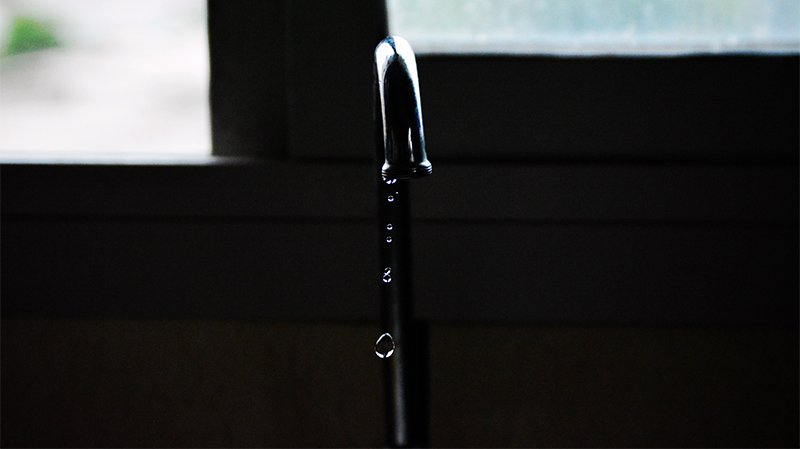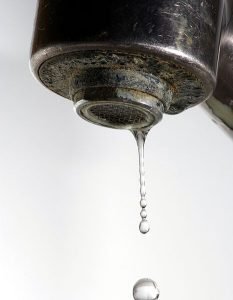Hard water occurs mainly in areas of the world where the source of water originates from underground, and where the rock formations through which the subterranean water has flowed consist mainly of limestone or dolomite.
Calcium and magnesium-based mineral salts from these rock formations are dissolved into the water and are the cause of its hardness.

Many regions of the world, including 85% of the USA and large parts of central Canada experience hard water conditions of over 120ppm (7gpg), as do most parts of Europe, including southern and central Ireland, eastern Spain, southern Portugal, northern Switzerland, western Belgium, and most of Holland, England and Germany.
In Europe, only Scotland and the Nordic countries of Sweden, Norway and Finland are largely free of hard water. In addition, some parts of Western Australia and India, as well as large parts of Sri Lanka, to mention just a few other countries, also experience hard water conditions.
Reasons Why You Need A Water Softener

The need for use of a water softener is usually first indicated by the presence of so-called ‘lime-scale’ on water faucet outlets, shower heads and in kettles.
Another early indicator is the spotting and streaking of glassware after washing, and on glass shower doors. This phenomenon is related to the fact that lime-scale tends to form more readily when water is heated, although it also forms when water evaporates.
Finally, if you have difficulty in getting soap to lather or shampoo to foam, and notice soap ‘scum’ in the form of a ‘bath-ring’, then it is very likely that your household water is relatively hard.
Hard water has economic as well as aesthetic impacts. The formation of lime-scale on electric water heating elements reduces their performance, requiring more energy to produce the same amount of heating as before the build-up of the scale, thereby driving up heating costs.
The build-up of lime-scale in hot water pipes results in a gradual reduction of water flow and the need to eventually replace the pipe-work, which can involve substantial reconstruction work, with associated costs.
Avoid Additional Costs With Hard Water
In order to avoid the costs and inconveniences associated with hard water in your home, it is clearly important to be forewarned. Your local water supply utility should be able to provide information about the hardness of the water they supply. If the supply area is very large, the data may be too generalized to be of use, and it will then be necessary to have your household water supply tested for its hardness, as described elsewhere.

If your water test results in a water hardness reading of 7gpg (120ppm) or more, then it is advisable that you have a water softener installed in your home to save costs and improve household cleaning performance. The water softener can be installed as a point of entry system softening water in both the cold and hot water lines, or else you could have it installed to only treat water going into your electric water heater.
If there is only one electric water heater in your home, this is an option, although it means remembering to only use hot water for boiling in your kettle, something some people are not comfortable with, and to plumb your dishwasher machine into the hot water system. As a result, it is probably easier and safer to go with a ‘whole-house’ point of entry installation.
You will need the results of the water hardness test to determine the size or capacity of the water softener system you intend to have installed, as well as an idea of the amount of water your household consumes on a daily basis.
A further point for consideration is whether you are comfortable with the use of sodium-chloride (salt) for your ion-exchange water softener, or whether you would prefer an alternative. This may simply be to use potassium salts, if the latter would fit into your household budget, or else to look at so-called ‘salt-less water softener’ systems.
These systems do not require the addition of sodium or potassium based salts for regeneration, but use cartridge-type media for ‘conditioning’ the hard water minerals so they don’t form lime-scale.
So What Do You Need To Know?
Finally, you need to also know what levels of iron and chlorine your water supply contains, and, if it is a private water supply, whether there is a chance of other contaminants.
These may require additional for-purpose filters to be installed before the water softener to protect it and your family from the negative effects of the presence of or elevated levels of these other minerals and dissolved solids.
Recommended Reading
Water Softening vs Water Filtration Systems – Exploring Differences
Think your water filter will soften your water, or that your water softener is filtering impurities out of your water? Think again ...
10 Benefits While Using Water Softeners According To Science
Hard and soft water exist and most people prefer soft water because of its moderate magnesium and calcium constituents. 10 benefits of water softeners...
How Much Does A Water Softener Cost – Installation System & Price Factors
When determining how much a water softener will cost, manufacturers consider various factors: type of your water softener installation, size, features, cost
How to Soften Hard Water. 4 Best Methods For Softening Water
What are some good and easy way methods for softening water? Let's dive in and see how we can learn how to soften your hard water...
What Size Softener Do I Need?
Do you know what is the best size for your water softener? Hard water can be unpleasant to use for bathing and showering.
14 Of The Most Common Water Softener Problems And How To Deal With Them
Most water softener problems can be easily identified and troubleshot. We will give you the most common problems and the best way to troubleshoot them.

